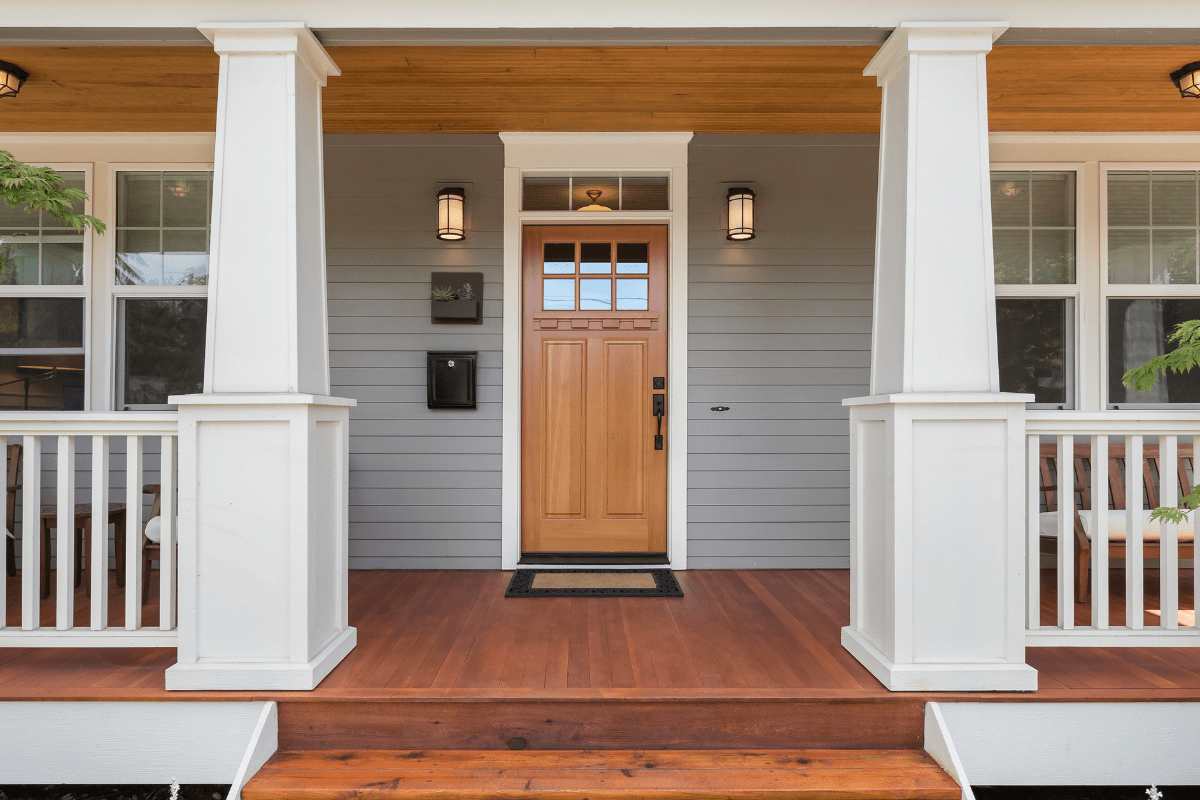Choosing a college in Illinois feels like shopping for cereal in a mega-supermarket… overwhelming options, confusing labels, and everyone insisting their choice is the healthiest. The good news? Illinois offers everything from Ivy-caliber universities to accessible state schools, with plenty of hidden gems that won't require selling a kidney for tuition.
Current state of Illinois higher education looks surprisingly bright
Despite all the doom and gloom about college costs and declining enrollment nationwide, Illinois higher education is actually thriving in ways that matter for prospective students.
Public universities just hit their highest enrollment in eight years with 185,590 students, up 1.6% from last year. That might sound like boring statistics, but here's what it actually means: more resources, more diverse perspectives in your classes, and universities investing in programs rather than cutting them. Freshman enrollment alone jumped 7% statewide, suggesting that Illinois families are voting with their feet (and wallets) for in-state education.
The financial aid picture has gotten remarkably better too. The state now offers over $750 million in scholarships, which represents an all-time high for Illinois. Even more exciting, UIC just announced their new Aspire program that provides completely free tuition for Illinois residents from families earning under $75,000 annually. That's not a typo… free tuition at a major research university starting Fall 2025.
Here's what else is trending upward in Illinois higher education:
- African American enrollment up 3.5%
- Latino enrollment increased 2.3%
- Transfer student enrollment grew 5.1%
- Retention rates hit 81.3%
- All public universities now test-optional
- Dual credit enrollment surged 9.8%
The test-optional shift deserves special attention. Since 2022, every Illinois public university has made standardized tests optional for admission. This isn't just virtue signaling… it's fundamentally changing who gets admitted and creating more diverse, interesting campus communities.
Let's talk money (because nobody else wants to go first)
The sticker prices at Illinois colleges range from "reasonable" to "are you kidding me?" but the actual costs often tell a different story.
Elite private universities: Yes, they're expensive, but…
Northwestern University tops the price chart at $96,236 total cost for 2025-2026. Before you close this tab in horror, understand that Northwestern meets 100% of demonstrated financial need without loans. Over 60% of students receive financial assistance, and many middle-class families pay far less than that scary sticker price.
The University of Chicago follows closely at $93,633 including room and board. Like Northwestern, they meet full demonstrated need, with average need-based grants of $67,505. That means the typical student receiving aid pays less than $30,000 annually… still substantial, but nowhere near six figures.
Public universities: The sweet spot for value
UIUC charges Illinois residents $12,992 in tuition, with total costs around $34,000-35,000 including room and board. Out-of-state students face a much steeper $53,000+ total, making it crucial to establish Illinois residency if possible. The university has frozen tuition seven times in the past decade, showing real commitment to affordability.
Regional public universities offer even better deals:
- Southern Illinois Carbondale: $30,185 total
- Northern Illinois: $30,288 in-state
- Illinois State: $34,309 total
- UIC: $11,424 tuition (potentially free with Aspire)
These schools provide legitimate four-year degrees at prices comparable to many community colleges in other states. Northern Illinois particularly stands out, with 88% receiving grants averaging $11,178.
Mid-tier private schools: The overlooked middle children
Illinois Tech charges $75,682 total cost but don't write it off immediately. About 90% of students receive aid averaging $38,027, bringing real costs closer to $37,000. Considering their #1 ranking in Illinois for career outcomes, that investment often pays off quickly.
DePaul runs about $45,275 in tuition, while Loyola Chicago charges $53,710. Both offer substantial aid packages, particularly for students demonstrating financial need or academic merit.
Getting in: From "good luck with that" to "welcome aboard"
Illinois colleges span the entire selectivity spectrum, offering realistic options for nearly every academic profile.
The ultra-competitive tier (bring your A++ game)
The University of Chicago maintains the state's toughest admissions at 4.5%, accepting just 1,955 students from 43,612 hopeful applicants. Their middle 50% ACT scores range from 34-35, which basically means perfect or near-perfect performance. They're looking for students who genuinely love learning for its own sake, not just grade grubbers.
Northwestern follows with a 7% acceptance rate, slightly more generous but still firmly in "reach school" territory for almost everyone. Their ACT range of 33-35 tells you everything about the competition level.
The flagship middle ground
UIUC accepts 42.3% of applicants overall, but that number masks huge variation by program. The Gies College of Business admits just 23.1%, while some liberal arts programs accept over 60%. Successful applicants typically present:
- ACT scores of 30-34
- Weighted GPAs around 3.94
- Strong extracurriculars related to intended major
- Compelling essays about specific programs
The university received 73,700 applications for Fall 2024, so standing out matters even with seemingly reasonable acceptance rates.
The accessible options (real colleges, real degrees, real opportunities)
Here's where Illinois shines for students who didn't cure cancer in high school. Southern Illinois Carbondale accepts 90.4% of applicants with ACT scores from 19-27. Illinois State admits 89% with scores of 22-27. These aren't "safety schools" in the dismissive sense… they're legitimate universities providing quality education to students across the academic spectrum.
Northern Illinois went completely test-blind, evaluating students without considering standardized tests at all. Their 70% acceptance rate reflects genuine accessibility.
Illinois Tech presents an interesting case, maintaining a 60% acceptance rate despite doubled application volume. They're looking for students passionate about STEM fields, not necessarily perfect test scores.
Academic programs worth bragging about (or at least mentioning at Thanksgiving)
Each Illinois university has developed distinctive strengths that go beyond generic "good education" claims.
UIUC dominates STEM fields with its #5 ranked engineering school. Their civil engineering program ranks #1 for graduate studies, while computer science sits at #5 nationally. The campus houses the National Center for Supercomputing Applications, where the web browser was basically invented. Their innovative CS+ programs let students combine computer science with unexpected fields like advertising or linguistics, creating unique skill combinations employers love.
Northwestern's Medill School of Journalism ranks #2 in the nation and has produced over 40 Pulitzer Prize winners. It's the only top-10 university offering undergraduate journalism degrees, making it the obvious choice for aspiring journalists who also want elite university credentials. The Kellogg School of Management consistently ranks among the world's best MBA programs, while their engineering and music schools provide additional excellence.
The University of Chicago difference
UChicago takes a deliberately different approach with their famous (or infamous) Core Curriculum. Every student, regardless of major, must engage with fundamental texts and ideas across disciplines. The Booth School of Business ranks #4 nationally for MBAs, with particular strength in finance and economics. The university's connection to 101 Nobel Prize winners isn't just trivia… it reflects a genuine culture of intellectual rigor that permeates every program.
Hidden gems in unexpected places
Illinois Tech's Elevate program guarantees every student hands-on learning experiences, from internships to research projects. Their 92.8% employment rate within six months proves this approach works. Plus, studying in buildings designed by Ludwig Mies van der Rohe adds unexpected architectural education to any degree.
DePaul's School of Cinematic Arts ranks #15 nationally among film schools, with programs at Cinespace Chicago Film Studios where actual Hollywood productions happen. No portfolio required for admission, making it accessible to late-blooming creative types.
Southern Illinois Carbondale's aviation program ranks #4 nationally for aviation management bachelor's degrees. Not many people know this, but SIU has its own airport and fleet of aircraft for training. Try finding that at Northwestern.
Campus life varies wildly (and that's actually great)
Student life at Illinois universities ranges from intense intellectual communities to traditional party schools, with everything in between.
The research university experience
UIUC enrolls 56,563 students across 1,783 acres, creating a small city atmosphere in Champaign-Urbana. With over 1,600 student organizations and roughly 20% Greek participation, everyone finds their tribe eventually. The international student population of 10,440 brings genuine global perspectives to cornfield country.
Northwestern's smaller enrollment of 23,203 creates a more intimate feel despite research university status. Greek life dominates social scenes more than at UIUC, with 34% of men and 39% of women participating. The famous Rock painting tradition continues after decades, providing a quirky creative outlet between studying.
Urban campus dynamics
UChicago's 18,339 students experience their unique House system instead of traditional Greek life. Each of 48 College Houses develops its own personality and traditions. Despite their self-deprecating motto "where fun goes to die," 70% of students participate in intramural sports and 450+ organizations stay active. The intellectual culture is real but not as oppressive as marketing suggests.
DePaul operates primarily as a commuter school with 90% living off-campus. This creates a more adult, professional atmosphere where students balance work, internships, and classes. The Loop and Lincoln Park locations put students directly in Chicago's business and cultural centers.
The traditional college town experience
Illinois State's 21,546 students in Normal-Bloomington enjoy a classic college town atmosphere. The 17 themed living-learning communities create smaller communities within the larger university. Southern Illinois Carbondale offers something completely different: 11,359 students on 1,136 rural acres near Shawnee National Forest. If you want to hike between classes and your idea of nightlife involves campfires, SIU delivers.
Career outcomes that justify the investment (mostly)
Let's examine what actually happens after graduation, using real data instead of vague promises.
Elite universities deliver predictable excellence. Northwestern graduates earn median salaries of $73,331 one year after graduation, rising to $95,985 at five years. UChicago does even better with $80,870 median earnings at six years. Their 90% medical school acceptance rate and 83% law school acceptance rate demonstrate serious graduate school preparation.
UIUC produces solid middle-class outcomes with $64,802 median earnings at six years. The 85% six-year graduation rate ranks in the top 10% nationally, and 90% of graduates secure employment or further education within six months. Major employers like Google, Microsoft, Amazon, and Deloitte recruit heavily on campus, with 8,473 organizations participating in recruiting activities.
The surprise winner for ROI
Illinois Tech stands out for economic mobility despite lower graduation rates. Ranked #1 in Illinois for graduate salaries by the Wall Street Journal, alumni earn $70,803 median salaries at six years. The school ranks #2 nationally for lifting students from bottom to top income quintiles among selective private universities. Their 92.8% employment rate within six months beats many more prestigious schools.
Regional publics show respectable performance too. Illinois State maintains a 77% six-year graduation rate with strong placement in education and business sectors. These schools might not produce Silicon Valley millionaires, but they reliably launch middle-class careers without crushing debt.
Making your choice (without losing your mind)
Choosing among Illinois colleges requires honest self-assessment about academic readiness, financial resources, and career goals. If you're genuinely brilliant and can handle intense academic pressure, UChicago or Northwestern offer transformative experiences and lifelong networks. If you're smart but not superhuman, UIUC provides world-class education at reasonable prices, especially for Illinois residents.
Don't overlook regional publics and mid-tier privates. Illinois State, Northern Illinois, and Southern Illinois serve students well while maintaining reasonable admissions standards. Illinois Tech offers exceptional value for STEM-focused students who want small classes and hands-on learning.
Consider these factors beyond rankings:
- Distance from home (homesickness is real)
- Campus culture fit
- Specific program strengths
- Internship and co-op opportunities
- Weather tolerance (Chicago winters aren't jokes)
- City vs. rural preferences
- Financial aid packages beyond year one
The bottom line on Illinois higher education
Illinois offers more quality college options than most states, from world-renowned research universities to accessible regional schools. The state's increased investment in higher education, combined with innovative programs like UIC's free tuition initiative, makes college more attainable than headlines suggest.
The key is matching your specific situation to the right institution. Not everyone needs or wants an elite university experience. Sometimes the "lesser" school with the perfect program, affordable price, and comfortable culture fit represents the smarter choice. Illinois higher education's diversity means you can find your place, whether that's debating philosophy at UChicago, engineering solutions at UIUC, or exploring aviation at SIU.
The improving enrollment trends, equity initiatives, and career outcomes across Illinois universities suggest the state's higher education system is adapting successfully to changing demographics and economic realities. While choosing a college remains stressful and expensive, Illinois students have more good options than ever. That supermarket cereal aisle might be overwhelming, but at least you know you'll find something nutritious that won't break the bank.





